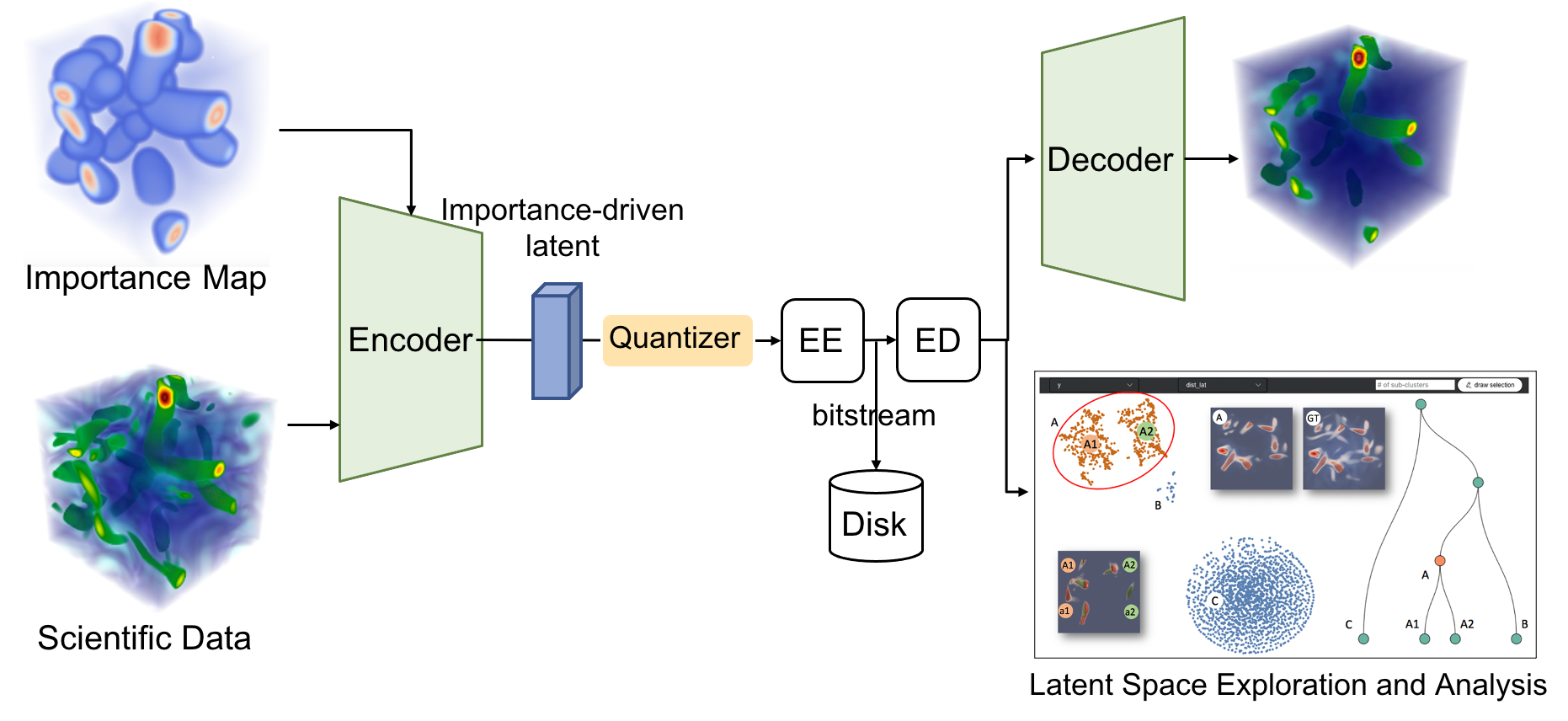IDLat: An Importance-Driven Latent Generation Method for Scientific Data
JINGYI SHEN, Haoyu Li, Jiayi Xu, Ayan Biswas, Han-Wei Shen
View presentation:2022-10-20T14:48:00ZGMT-0600Change your timezone on the schedule page
2022-10-20T14:48:00Z

Prerecorded Talk
The live footage of the talk, including the Q&A, can be viewed on the session page, ML for VIS.
Fast forward
Abstract
Deep learning based latent representations have been widely used for numerous scientific visualization applications such as isosurface similarity analysis, volume rendering, flow field synthesis, and data reduction, just to name a few. However, existing latent representations are mostly generated from raw data in an unsupervised manner, which makes it difficult to incorporate domain interest to control the size of the latent representations and the quality of the reconstructed data. In this paper, we present a novel importance-driven latent representation to facilitate domain-interest-guided scientific data visualization and analysis. We utilize spatial importance maps to represent various scientific interests and take them as the input to a feature transformation network to guide latent generation. We further reduced the latent size by a lossless entropy encoding algorithm trained together with the autoencoder, improving the storage and memory efficiency. We qualitatively and quantitatively evaluate the effectiveness and efficiency of latent representations generated by our method with data from multiple scientific visualization applications.